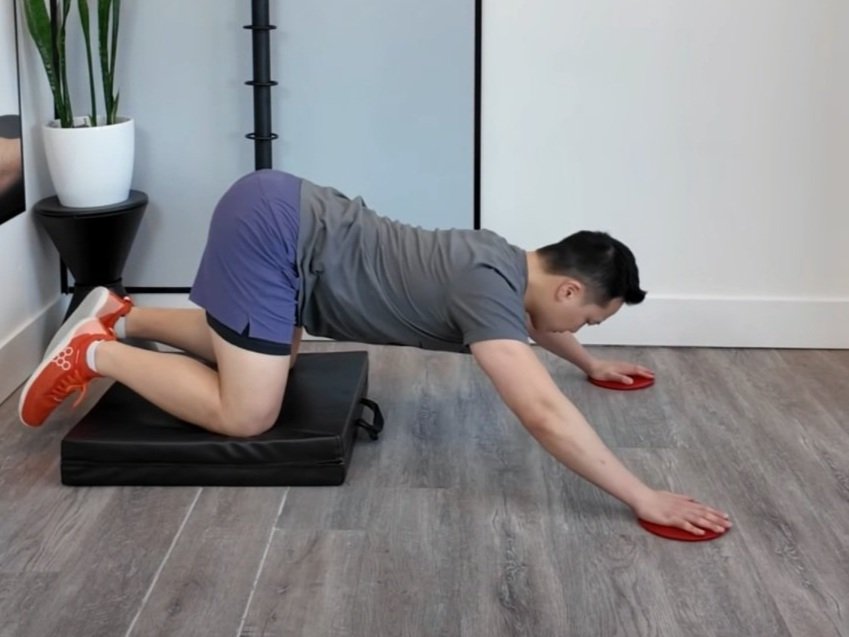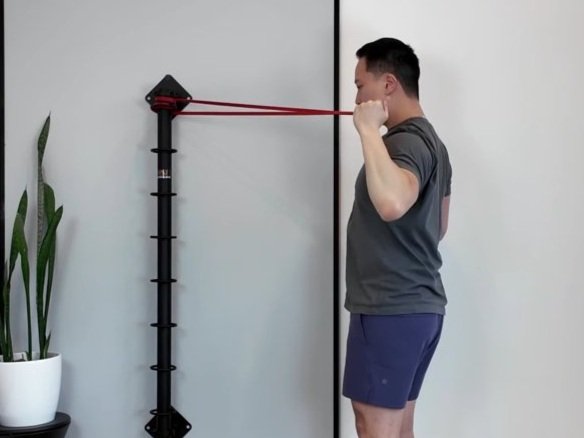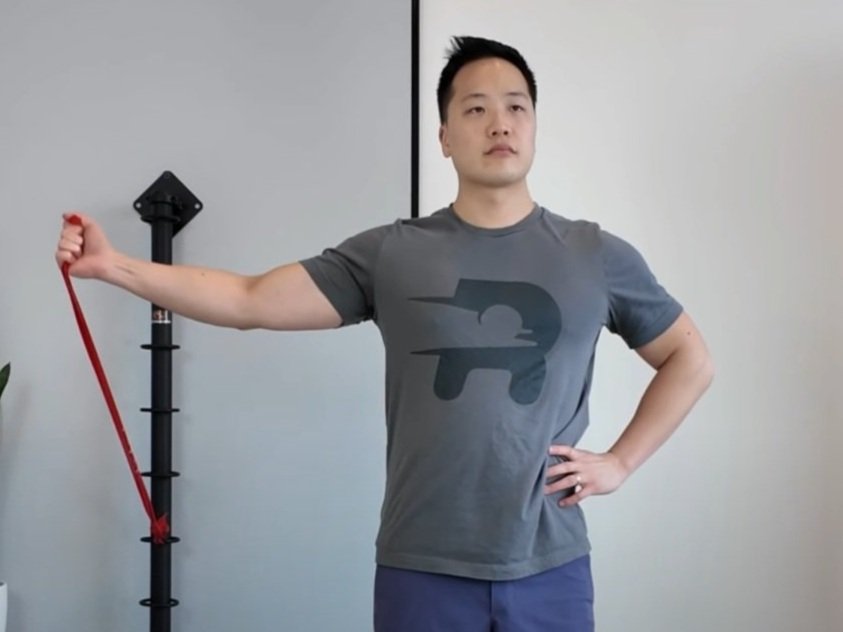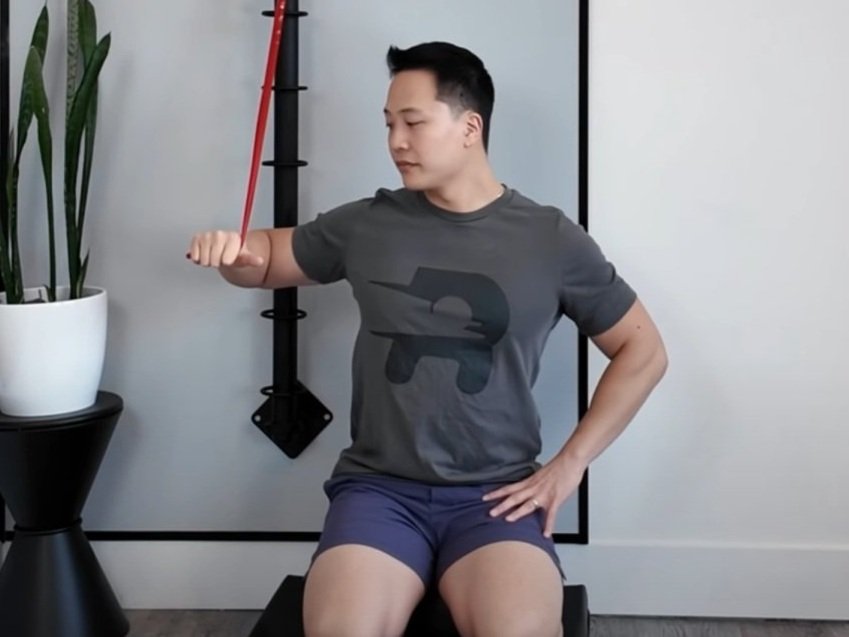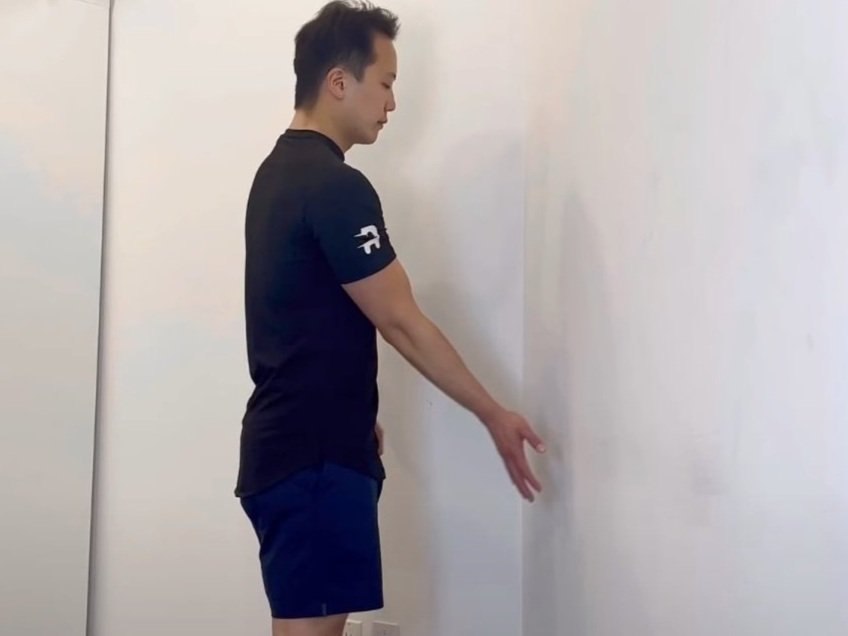Exercises for Glenoid Labral Tear
What can you do about your labral tear?
Learn about the glenohumeral joint and how to start stabilizing the shoulder.
A glenoid labral tear is a separation of the cartilage that helps keep the shoulder joint in place. This injury can be caused by repetitive overhead motion, such as throwing or serving a ball, or may occur as a result of an accident or trauma. Symptoms of a glenoid labral tear include pain, stiffness, and difficulty moving the arm. If you are experiencing any of these symptoms, it is important to consult with your physician to determine the best treatment plan. There are several treatment options available for glenoid labral tears, including physiotherapy exercises. Physiotherapy can help to improve range of motion and strength in the shoulder and restore mobility. There are many physiotherapy exercises that can be helpful for this condition, so be sure to discuss your individual needs with your therapist.
Glenoid labral tears can be the cause of chronic shoulder pain. It is due to the detachment of labrum at the insertion of the biceps brachii long head muscle. This injury can occur alone or in combination with rotator cuff tears, shoulder impingement, glenohumeral instability, shoulder dislocations, and shoulder subluxations to name a few.
What types of glenoid labral tears are there?
There are three main types of glenoid labral tears. They are SLAP lesions, Bankhart lesions, and Bennett lesions. Of these, SLAP lesions are the most common. All three types of glenoid labral tears can present with the same type and location of pain. Your chiropractor or physiotherapist will be able to assess your shoulder to determine which type of lesion you have.
SLAP lesions - this is an acronym for superior labrum anterior to posterior tear. There are four sub-classifications as well.
Type 1 - Fraying of the labrum occurs and the biceps anchor is intact
Type 2 - This is the most common type of SLAP lesion. The superior labrum is torn leading to biceps anchor instability
Type 3 - Bucket-handle tearing of the superior labrum
Type 4 - Bucket-handle tearing with involvement into the biceps tendon
Bankhart lesion - this type of lesion is the second most common type of glenoid labral tears. With this, there is tearing of the lower half of the labrum and inferior glenohumeral ligament. This is associated with shoulder dislocations
Bennett lesion - this is the least common type of labral tear. The posterior labrum is torn and it can occur with posterior rotator cuff damage.
Who usually gets a glenoid labral tear?
The most common demographic is in athletes that play sports that require repetitive overhead activities. It is found in roughly 10-20% of patients with shoulder pain and can occur at any age (but most commonly found in 20-40 year olds). This is more likely to occur in males with a 5:1 male to female ratio.
Risk factors for injury include:
Throwing, swimming
Direct injury (fall on outstretched hand)
Instability (awkward arm position at time of injury)
What can a shoulder labral tear feel like?
Often pain is triggered with overhead activities. Pain can occur with ‘snapping’ or ‘popping’ and may even feel like something is being caught within the join. Pain can occur when sleeping on your side or with regular activities of daily living. Often there is a sense that the shoulder is unstable, which can lead to decreased range of motion and shoulder strength.
Who shoulder I consult with about my labral tear?
You can directly visit a sports physiotherapist or chiropractor near you for an initial evaluation of your glenoid labral tear. Your clinician will be able to complete special orthopedic tests used to determine the severity of your injury, and to rule in or out associated injuries like a rotator cuff tear. For severe tears, they will refer you to your family doctor for MRI imaging and a referral to an orthopedic surgeon.
Minor tears respond well to conservative treatments. For severe tears surgery may be required.
What does a physical rehabilitation program for a glenoid labral tear involve?
Your rehabilitation program will different depending on your stage of healing. Generally it can take 14 weeks or more to complete a program after the initial injury or following surgery. Here is a general framework that your physiotherapist may use:
Weeks 1-2: Gripping exercises and wrist mobility exercises
Weeks 3-6: Pain free passive range of motion exercises and gentle biceps long head tendon loading exercises can begin. Scapular strengthening exercises may start as well
Weeks 6-8: Exercises will generally be focused on active assisted range of motion exercises in flexion (below shoulder height). Scapular strengthening exercises can start to include banded resistance. Shoulder proprioception exercises may be introduced in a tolerable range of motion.
Weeks 8-10: Full range of motion exercises may be completed pain free. Progression to basic shoulder strengthening exercises can begin with careful consideration of the biceps long head tendon.
Weeks 10-14: Higher demand exercises such as plyometrics, endurance, and eccentric training may begin.
Weeks 14+: Sport specific exercises may begin. Return to work exercises may also begin. Slow return to regular activities may begin with monitoring of symptoms to prevent re-injury.
For chronic labral tears your rehabilitation program will begin differently from the post-surgical / post-acute injury rehabilitation written above. Instead, exercises can begin with pain-free rotator cuff strengthening, scapular strengthening, and biceps strengthening right away. Additional exercises focused on proprioception and stability may also be used to optimize patient success.
Examples of basic exercises
For those who are experiencing chronic labral tear issues, basic exercises are generally focused on rotator cuff activation and joint stability proprioception. Prior to starting any new exercises for your injury, it is recommended that you consult your doctor to see if they are right for you. The exercises listed in this blog post or on our website are not a substitute for a consultation with your health care provider.
The first exercise example is the Shoulder Clock exercise. It is a shoulder stability exercise that use a loop band. To Start, go on your hands and knees. Align your hands with your shoulders, and your knees with your hips. Pull the band apart by reaching outwards with the affected side’s hand in the direction of an hour mark on a clock. Return back to start position and repeat for the other directions.
The second exercise example is the Side Lying Uppercut exercise. Similar to the prior exercise, this should be completed pain-free. This exercise focuses on stimulating the external rotators of the shoulder while moving into shoulder flexion. In essence, it will get your rotator cuff to work with your biceps brachii muscle. While starting on your side, hold a weight with your top arm. Tuck your elbow into the side of your body and externally rotate the shoulder until your wrist is in alignment with your elbow. From there, keep the arm parallel to the ground while you move your arm into shoulder flexion. Maintain a 90 degree elbow bend throughout this exercise. Reverse the motion to complete the exercise.
The third and last exercise example is the Internal Rotation Perturbations exercise which is focused on improving shoulder proprioception & stability. This exercise will require a pullup assist or tube band and a weight plate weighing 2.5 lbs or less. Anchor one end of the band to a stable object like a band anchor and loop it through the hole of the weight plate. Then hold the free end of band with the arm closest to the anchor point. Tuck your elbow to the side of your body and bend it to 90 degrees. Grab the weight plate and pull on it to tense the band and let go. This will launch the weight and cause the band to shake, resist the movement with your arm and shoulder.
For exercises specific to your current level of healing it is best to work 1-on-1 with a sports physiotherapist or chiropractor. Exercises prescribed are dependent on your physical assessment, and your physical assessment is dependent on you! Although general exercises found online may be helpful, personalized exercises are always recommended instead.
Conclusion
Although glenoid labral tears are a serious injury, fortunately there are rehabilitation exercises that can be done to ease pain and improve function. If you suspect you may have a glenoid labral tear, it is important to get assessed by a professional as soon as possible. At our clinic, we offer appointments with highly qualified physiotherapists who specialize in exercise rehabilitation for glenoid labral tears. Book in an appointment today to help ease your pain and improve your quality of life.
Written by Dr. David Song
Dr. David Song is a chiropractor in Toronto with experience working with powerlifting and Olympic weightlifting athletes. He has a passion helping individuals improve their strength training related injuries. Being a believer in self empowerment, he focuses on educating patients in-person and on the internet to help prevent as many injuries as possible.
















